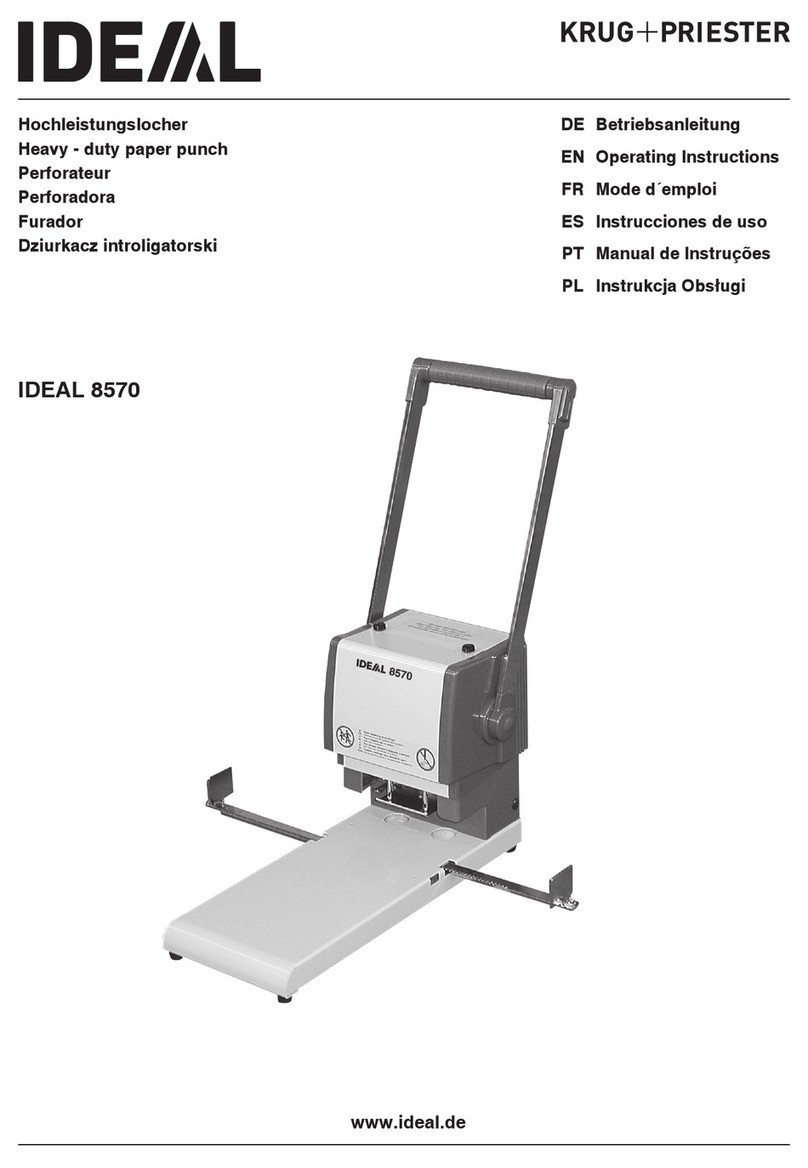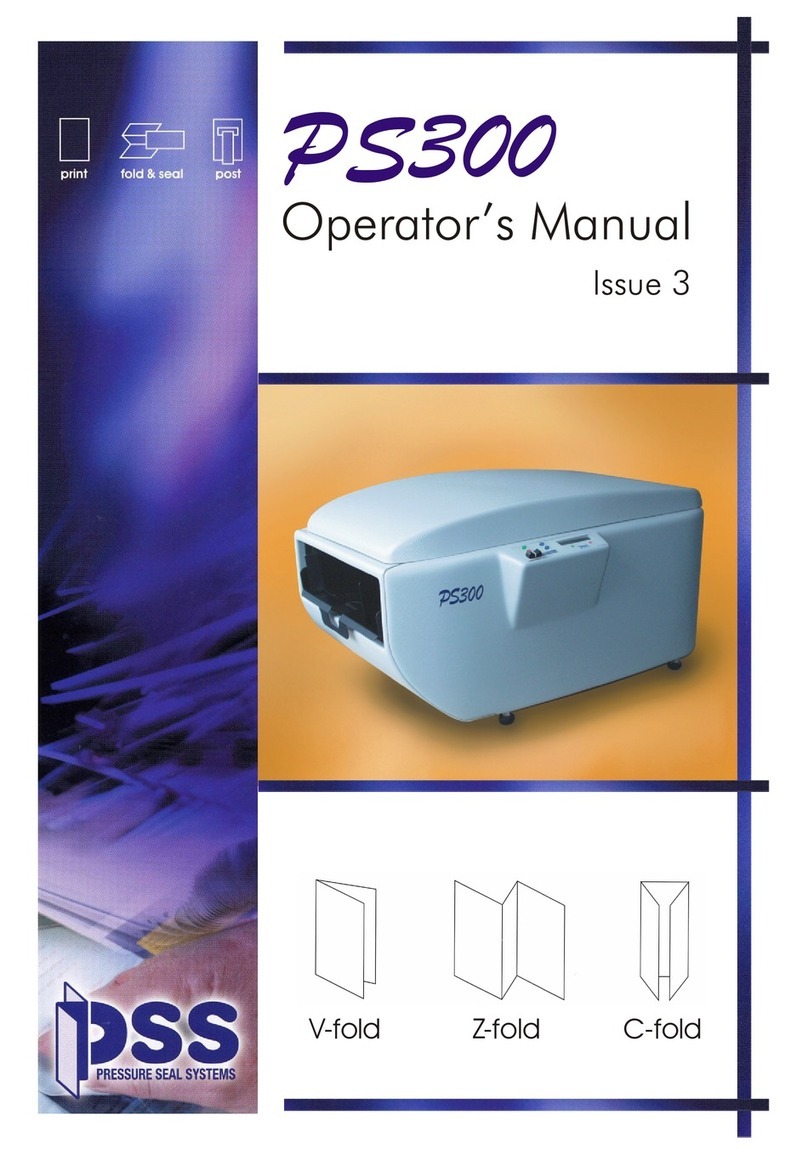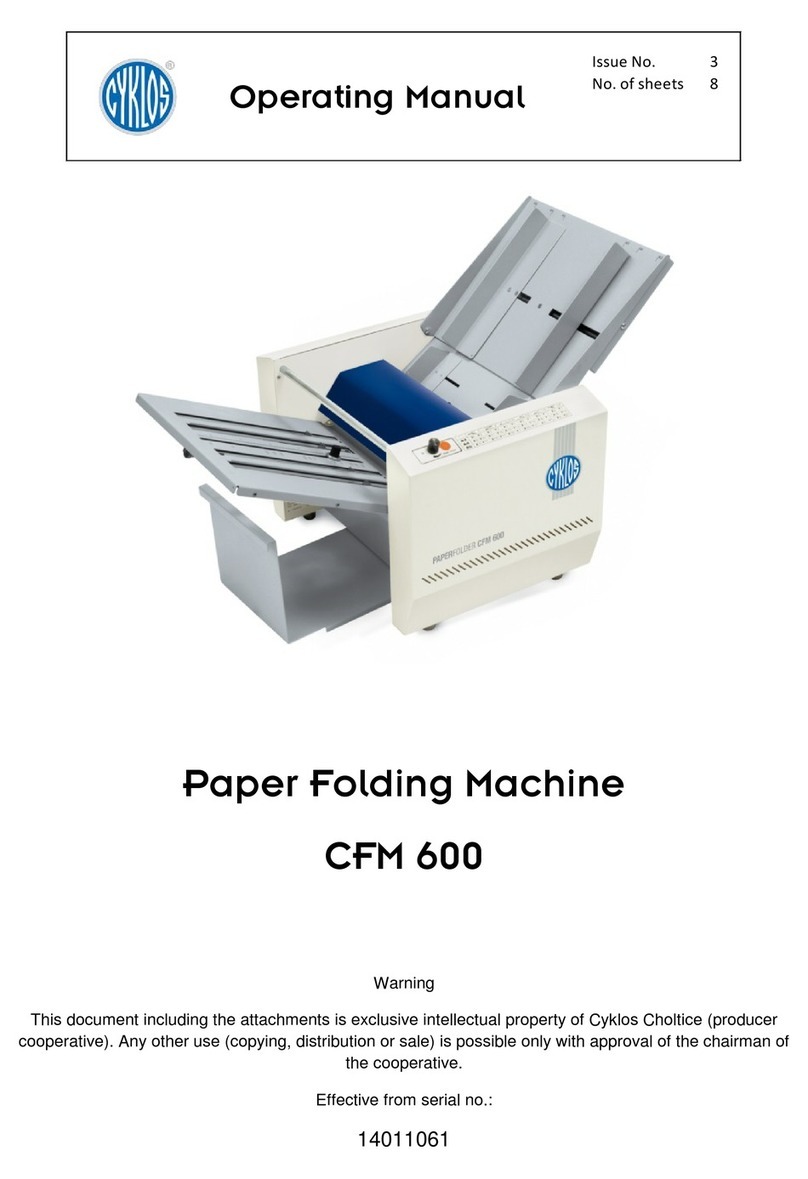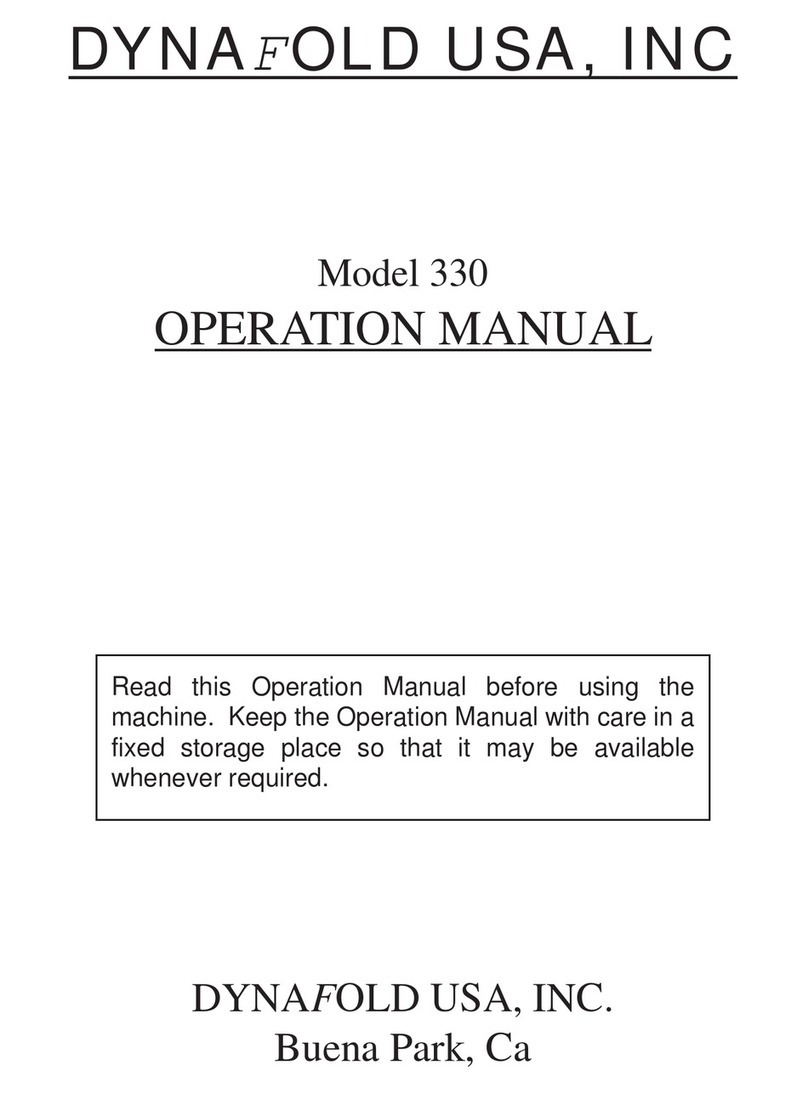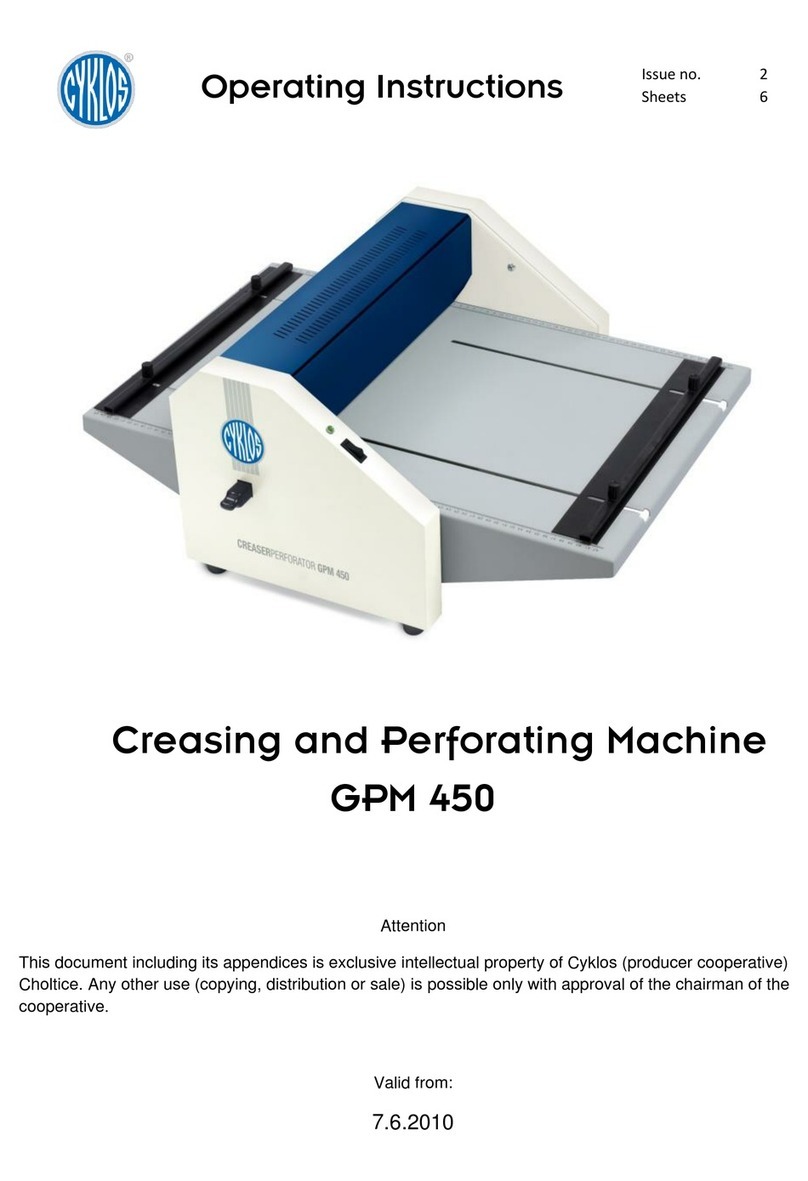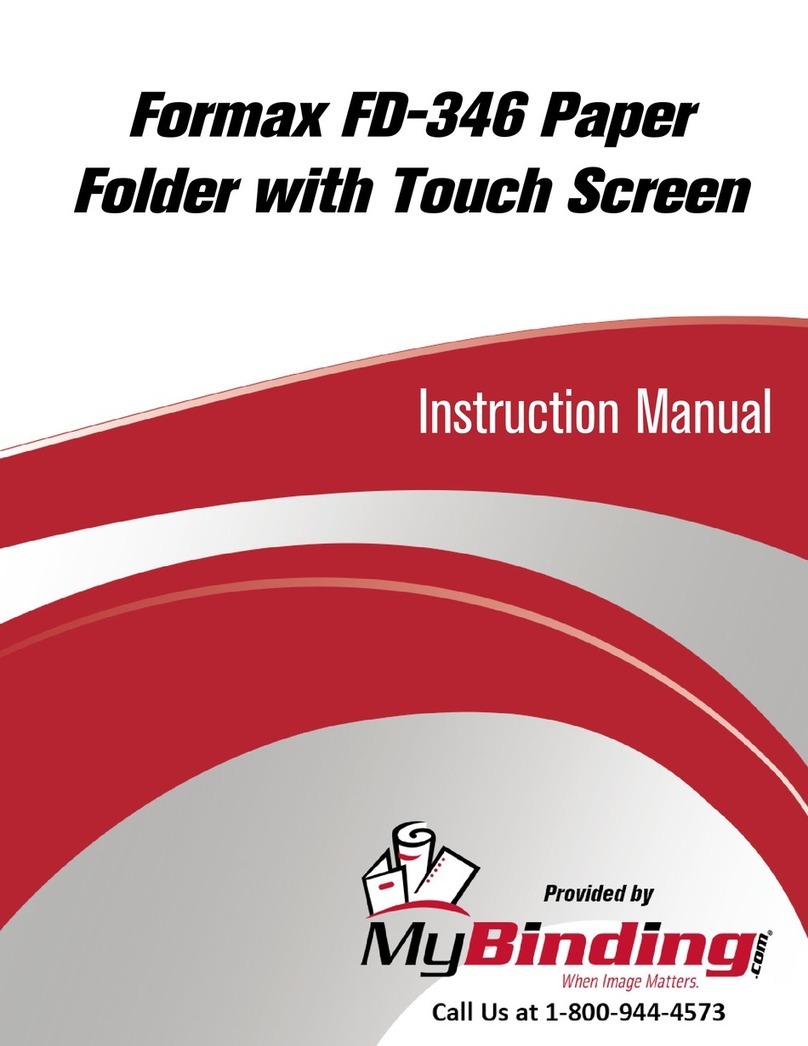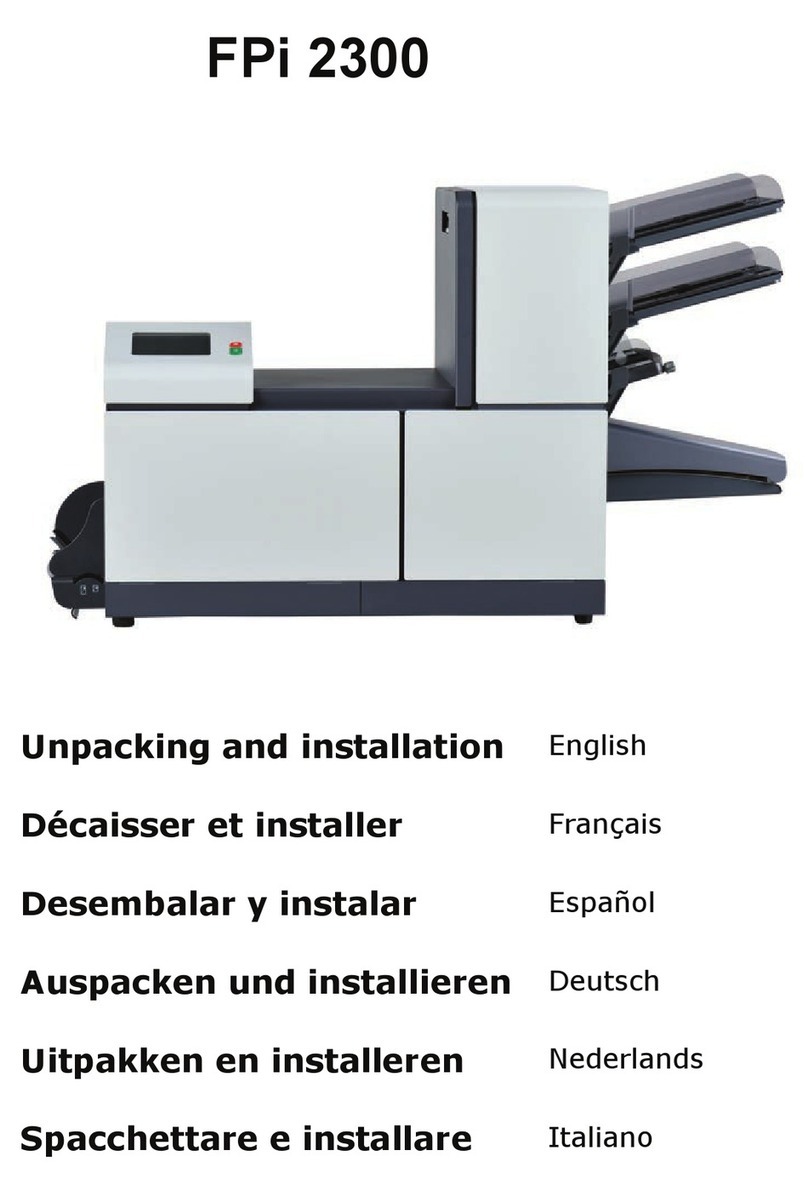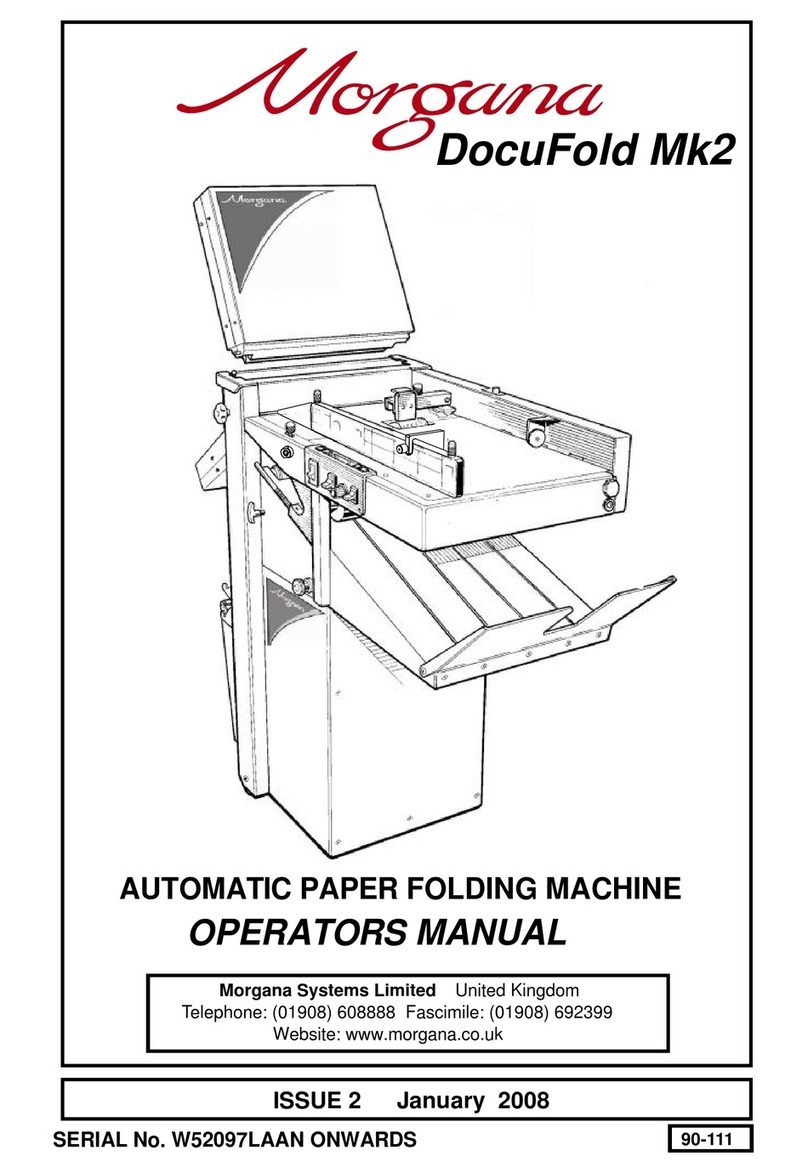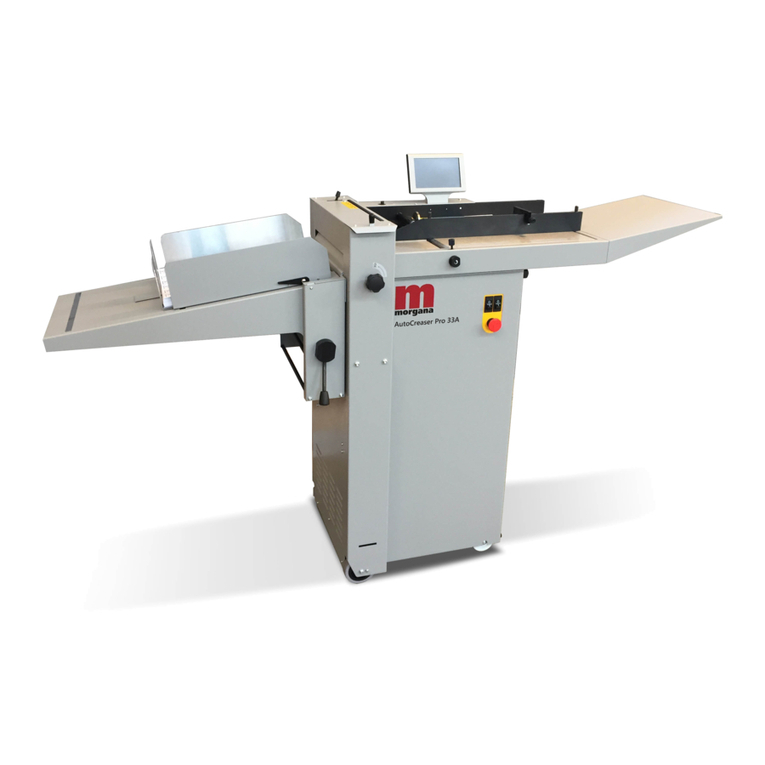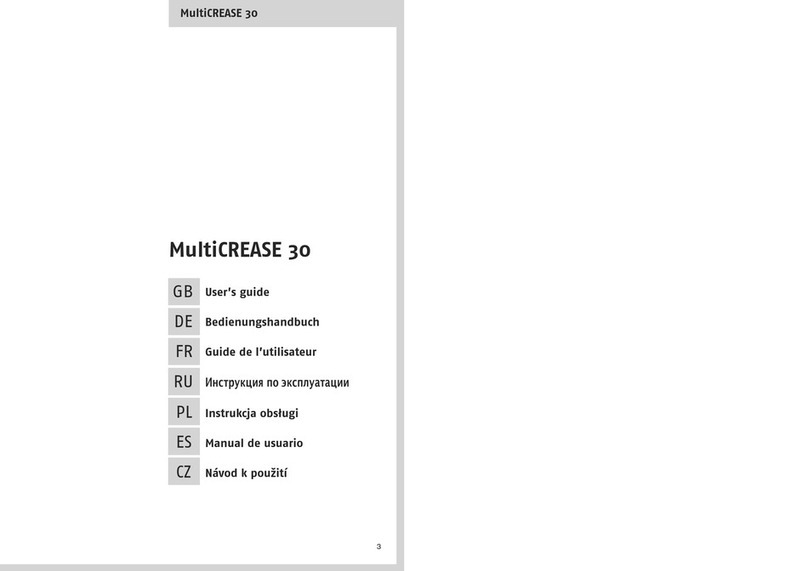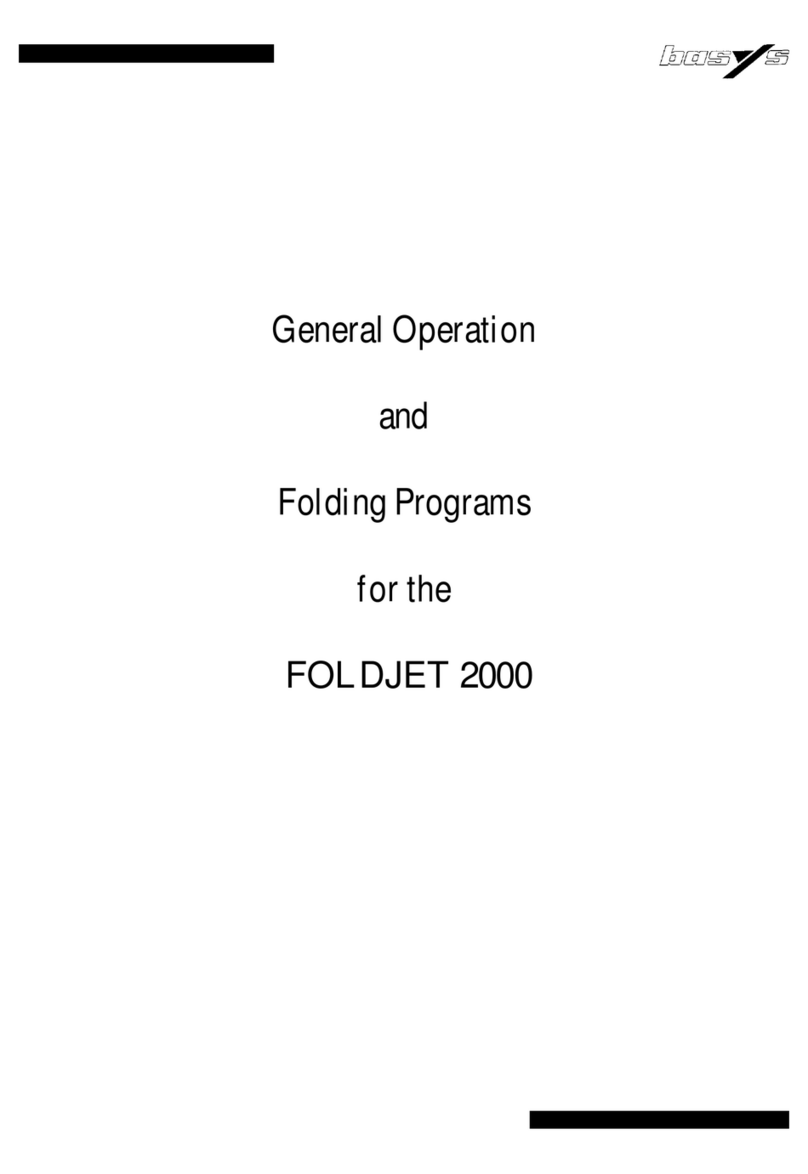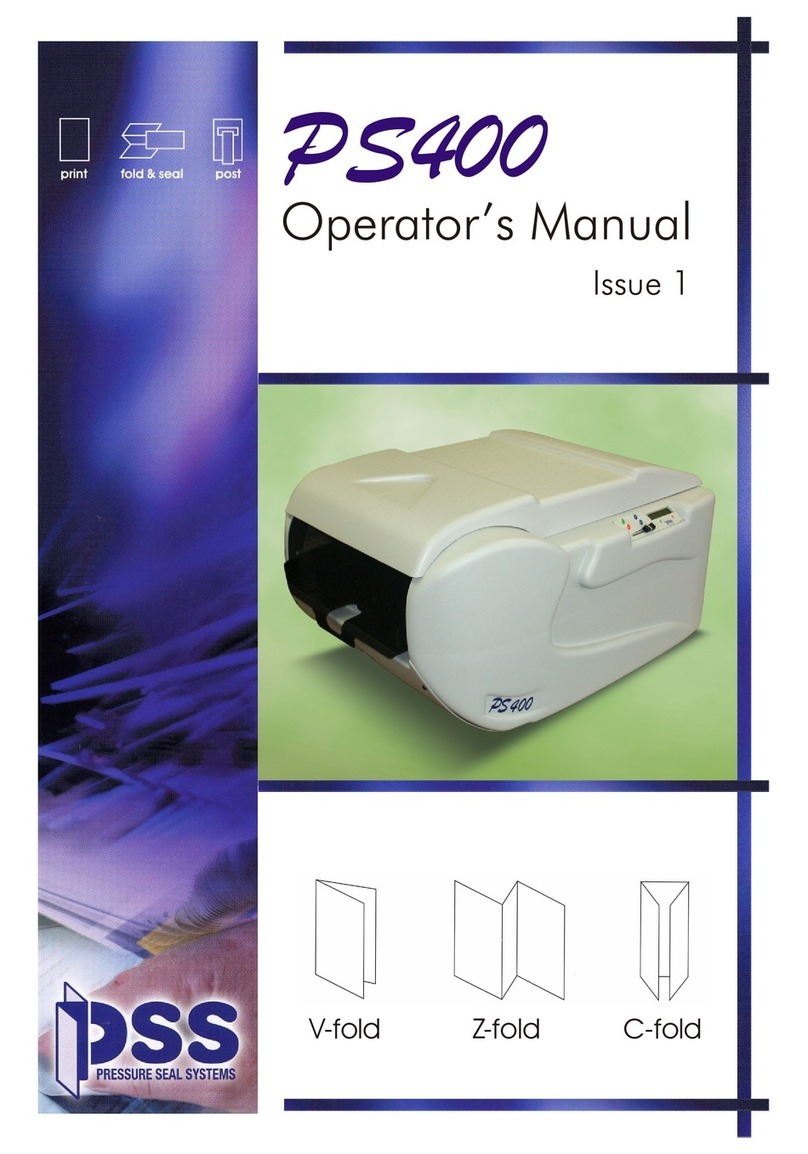Page 4 PAPER
INTRODUCTION AND SPECIFICATION
Major is a registered trade mark of Morgana Systems Ltd. The Morgana Major is designed
to be used in today’s environment of document production, the Morgana Major can be
used by non skilled personnel by following this easy to use operators guide. There are very
few operator adjustments required on the machine and our section will get
you started very quickly, but we do recommend that you take a little time to read this
manual, to ensure that you fully understand the machine. We have also included a
section. Be sure to read this section calling a service
engineer to avoid unnecessary expense. A maximum paper weight cannot be specified, as
this can be governed by the hardness of the substrate or the type of fold required to be
produced.
Feeding System .......................................... Bottom suction feed
Max. Sheet Size .......................................... 674mm Long x 365mm Wide (26.5” x 14.37”)
Min. Sheet Size ........................................... 160mm Long x 140mm Wide (6.3” x 5.5”)
Max. Paper Weight ...................................... 240gsm Max. according to hardness, type
of fold, grain direction and substrate
Min. Paper Weight ....................................... 56gsm
Max. No. Folds per Sheet............................. 2
Speed per Hour (A4 Material) ...................... 27,500 sheets (Stream Feed)
QUICK START
TIPS &
TROUBLE SHOOTING before
IMPORTANT
Note:
the operating environment should be controlled to a temperature between
16° C and 27° C Maximum.
Max. Fold Length ......................................... 337mm (13.25”)
17,250 sheets (Pulsed Feed)
Speed per Hour (A3 Material) ...................... 18,000 sheets (Stream Feed)
13,250 sheets (Pulsed Feed)
Dimensions .................................................. L: 1168mm H: 990mm W: 493mm
Weight ..........................................................120Kgs (+11Kgs packing)
Power Requirement ......................................1 phase 220 / 240v
Specification
The production speed varies according to the material size.
Major
